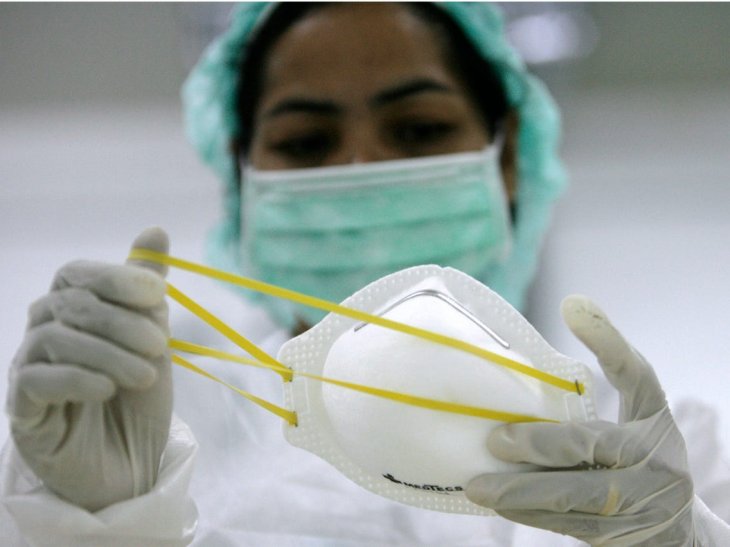These Light-Up Face Masks Can Detect Coronavirus Cases
Harin - May 16, 2020

A team of MIT and Harvard scientists is working on a light-up face mask based on Zika nad Ebola-detecting face masks to identify Coronavirus cases.
- This Company Buys People’s Face For Rs 28,000 To Make Realistic Masks
- Electric Cookers Clean Face Masks Better Than UV Light, Study Finds
- This App Can Generate A Perfectly Fit Seal For Face Masks
A team of MIT and Harvard scientists is working on a light-up face mask based on Zika nad Ebola-detecting face mask to identify Coronavirus cases.
The initial study of the team, published in the Cell journal, first introduced the face mask the could detect Ebola and Zika back in 2016. Now, this tool is being adapted to light up when a COVID-19 positive patient breathes, coughs, or sneezes. If this tool is proved to be successful, it will be a helpful one, along with other screen methods such as temperature checks.
Researcher Jim Collins said in an interview with the Business Insider that this tool could be used in airports at the security gates before getting on a plane. The mask could also be used in daily lives. Meanwhile, hospitals could use it as a pre-screen by giving them to new patients.

It could also be used by doctors for in-situ diagnoses, without having to wait for the results from a laboratory. Because the prompt response is crucial in controlling the outbreak, there is an urgent need for quick diagnosing tools.
Collins added that the mask is still in its very early stages. However, so far, the results have been promising. In the last few weeks, the team tested the detection ability of the sensors on COVID19 samples in a small saliva sample.
Moreover, the team is working on the design of the mask. The researchers are in the discussion whether to embed the sensors insides masks or to develop a new module and attach it to any regular mask.
The goal of the team is to come up with a new concept’s demonstration within a few weeks.

After that, they could set up human trials to see if the mask would work properly in a real-world setting. However, it is worth noting that there is nothing new about COVID-19 detecting technology. Back in 2018, the sensors of the lab could already detect many viruses including SARS, hepatitis C, measles, West Nile, influenza, and many more.
The sensors comprise RNA and DNA binding to the viruses. Using a machine known as lyophilizer, the researchers then freeze-dry the genetic material onto the fabric. With the help of the machine, the moisture is removed from genetic material without killing it. At room temperature, the material can remain its stability for months, thus allowing masks detectors to have a fairly long shelf life.
For activation, the sensors require moisture from our bodies like respiratory particles in saliva or mucus. From there, the sensors will start with the detection.

However, we can’t see the detection with our naked eyes. That is when a fluorimeter comes in handy. Collins said that for public officials who don’t work inside a lab, they can use a handheld version which costs only a dollar to scan the masks of people that might have been infected with the virus.
>>> This LED Face Mask Will Alert Other People To Stay 2 Meters Away From You
Featured Stories

Features - Jul 01, 2025
What Are The Fastest Passenger Vehicles Ever Created?

Features - Jun 25, 2025
Japan Hydrogen Breakthrough: Scientists Crack the Clean Energy Code with...

ICT News - Jun 25, 2025
AI Intimidation Tactics: CEOs Turn Flawed Technology Into Employee Fear Machine

Review - Jun 25, 2025
Windows 11 Problems: Is Microsoft's "Best" OS Actually Getting Worse?

Features - Jun 22, 2025
Telegram Founder Pavel Durov Plans to Split $14 Billion Fortune Among 106 Children

ICT News - Jun 22, 2025
Neuralink Telepathy Chip Enables Quadriplegic Rob Greiner to Control Games with...

Features - Jun 21, 2025
This Over $100 Bottle Has Nothing But Fresh Air Inside

Features - Jun 18, 2025
Best Mobile VPN Apps for Gaming 2025: Complete Guide

Features - Jun 18, 2025
A Math Formula Tells Us How Long Everything Will Live

Features - Jun 16, 2025
Comments
Sort by Newest | Popular